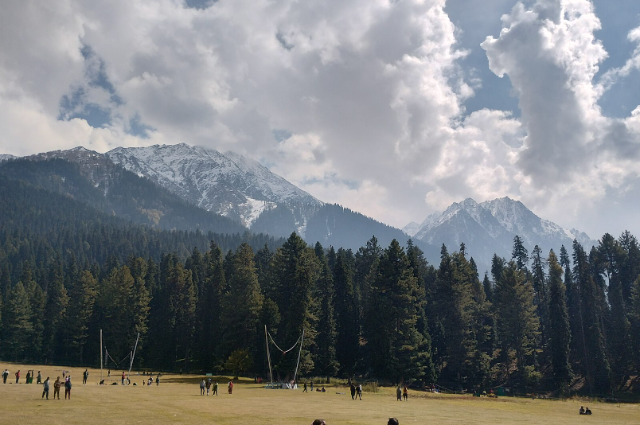
“This is not speculation. This is proof, backed by biometrics, documents, and battlefield forensics.” With a chilling statement but a firm statement, the Indian government has officially confirmed that the three militants who were killed during Operation Mahadev after the Pahalgam terror attack in April were Pakistani nationals who were linked to the terror outfit Lashkar-e-Taiba. It is confirmed weeks after forensic tests, biometric cross-matching done against the national database in Pakistan, as well as the acquisition of Pakistani voter photo registry IDs and other personal effects.
Story Behind
The April 22, 2025, Pahalgam terror attack was a shock to the country by heavily armed men shot indiscriminately at tourists and local street dealers in the beautiful meadow of Baisaran, Kashmir, killing 26 civilians and wounding more than 40 other people. The attack was among the bloodiest terror attempts since the Pulwama attack of 2019 in Kashmir.
The April 22, 2025, Pahalgam terror attack was a shock to the country by heavily armed men shot indiscriminately at tourists and local street dealers in the beautiful meadow of Baisaran, Kashmir, killing 26 civilians and wounding more than 40 other people. The attack was among the bloodiest terror attempts since the Pulwama attack of 2019 in Kashmir.
How India Identified the Terrorists
During a certain session that was held in the Parliament, the Union Home Minister, Amit Shah, made some information that the three terrorists, who had been killed, Suleman Shah (alias Faizal Jatt), Abu Hamza (alias Afghan) and Yasir (alias Jibran) were all confirmed to be Pakistani origin, based on the following:
- Biometric matches are performed in scratches that are scraped in Pakistan, NADRA (National Database and Registration Authority).
- The Voter ID cards of Pakistani origin found in the bodies and which could be traced to constituencies of Kasur, Lahore, and Rawalakot.
- Satellite phones and hand-held GPS units, with whose aid their journeys were beamed back in the Pakistan-occupied Kashmir (PoK) at the Pahalgam area.
- Ballistics that identified the weapons used in the massacre were the same weapons recovered from the attackers.
- The fact that there were Karachi-manufactured confectionery wrappers and water bottles that were retrieved in their backpacks also reaffirmed the cross-border intrusion theory.
Not just defusing terrorists, the operation also led to the discovery of a weapons trove, fake Aadhaar identity cards, and even encrypted data with the handlers of the terrorists at Rawalpindi.
Lashkar’s Signature Footprint
The mode of operation had a strong Lashkar-e-Taiba trademark, at least according to the Indian intelligence, near-perfect targeting of civilians, routes, and radical-evading infiltration routes via Pir Panjal passes.
“This is irrefutable. We now have forensic and technical data that conclusively establish a foreign hand behind Pahalgam,” Shah declared in the Lok Sabha, urging all parties to support the government in "naming and shaming" Pakistan on international forums.
Nationwide Response
Their security and political experts and commentators of the country responded with a bang:
- One senior retired general noted, “This changes the rules of engagement. When militants come with IDs from another nation, it’s not insurgency—it’s war by proxy.”
- An editorial in a leading national daily questioned, “Will global powers now still call it a ‘border dispute’? Or will they finally recognise state-sponsored terrorism for what it is?”
- Local Kashmiris also voiced concern, with one Srinagar shopkeeper saying, “We want peace, not politics. Every time this happens, our lives go back ten steps.”
Social Media Buzz
The issue trended heavily across platforms under hashtags like #PahalgamTruth, #OperationMahadev, and #CrossBorderTerror. Online discussions spanned from calls for tougher diplomatic steps to demands for international sanctions on Pakistan.
In a viral video, a group of Kashmiri youth were seen laying flowers at the site of the attack, holding placards that read “Terror Has No Religion, No Borders—Only Victims.”
Political Divide
As the ruling regime pointed to a vindication of their tough position towards cross-border terrorism, opposition parties warned against it.
Congress leader Rahul Gandhi acknowledged the findings but stated, “National security requires unity, not triumphalism. The fight is against terror, not nations.”
Beyond Borders: What This Means for India
It is this incident (and the evidence that occurred thereafter) that made a change in the counter-terror doctrine in India:
- Evidence-driven policy: Biometric, technical, and physical evidence provided by India is bringing India to a new level in proving terror claims globally.
- International pressure on Pakistan: India is now ready to take the issue to new heights in the UN, including FATF platforms, equipped with strong evidence.
- Kashmir security doctrine upgrade: Change is taking place towards the form of hybrid warfare, watching physical infiltration and digital planning through satellite interaction.
- Public awareness and resolve: People now know better or have come to appreciate the complexity and scope of threats, and are more willing to gravitate towards the idea of stiffer anti-terror legislation and investment in intelligence spending.
FINAL THOUGHT
The sequence of events after the attack at Pahalgam shows not only a terror scheme, but a well-planned scheme of infiltration, plotting, and a masquerade on an international level. However, this time India has receipts.
In the case of a conflict of narratives, it is in the year 2025 a conflict of evidence, as opposed to the word. And in this case, the fingerprints, documents, devices, and DNA are the narrator more than any slogan could ever be.
